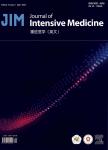Importance of timely and adequate source control in sepsis and septic shock
Importance of timely and adequate source control in sepsis and septic shock作者机构:Department of Intensive Care MedicineGhent University HospitalGhentBelgium Department of Internal Medicine and PediatricsFaculty of Medicine and Health SciencesGhent UniversityGhentBelgium
出 版 物:《Journal of Intensive Medicine》 (重症医学(英文))
年 卷 期:2024年第4卷第3期
页 面:281-286页
核心收录:
学科分类:1002[医学-临床医学] 100201[医学-内科学(含:心血管病、血液病、呼吸系病、消化系病、内分泌与代谢病、肾病、风湿病、传染病)] 10[医学]
基 金:supported by the Research Foundation Flanders(grant number 1881020N)
主 题:Sepsis Septic shock Source control Drainage Debridement
摘 要:Source control is defined as the physical measures undertaken to eliminate the source of infection and control ongoing contamination, as well as restore anatomy and function at the site of infection. It is a key component of the management of patients with sepsis and septic shock and one of the main determinants of the outcome of infections that require source control. While not all infections may require source control, it should be considered in every patient presenting with sepsis;it is applicable and necessary in numerous infections, not only those occurring in the abdominal cavity. Although the biological rationale is clear, several aspects of source control remain under debate. The timing of source control may impact outcome;early source control is particularly relevant for patients with abdominal infections or necrotizing skin and soft tissue infections, as well as for those with more severe disease. Percutaneous procedures are increasingly used for source control;nevertheless, surgery—tailored to the patient and infection—remains a valid option for source control. For outcome optimization, adequate source control is more important than the strategy used. It should be acknowledged that source control interventions may often fail, posing a challenge in this setting. Thus, an individualized, multidisciplinary approach tailored to the infection and patient is preferable.



